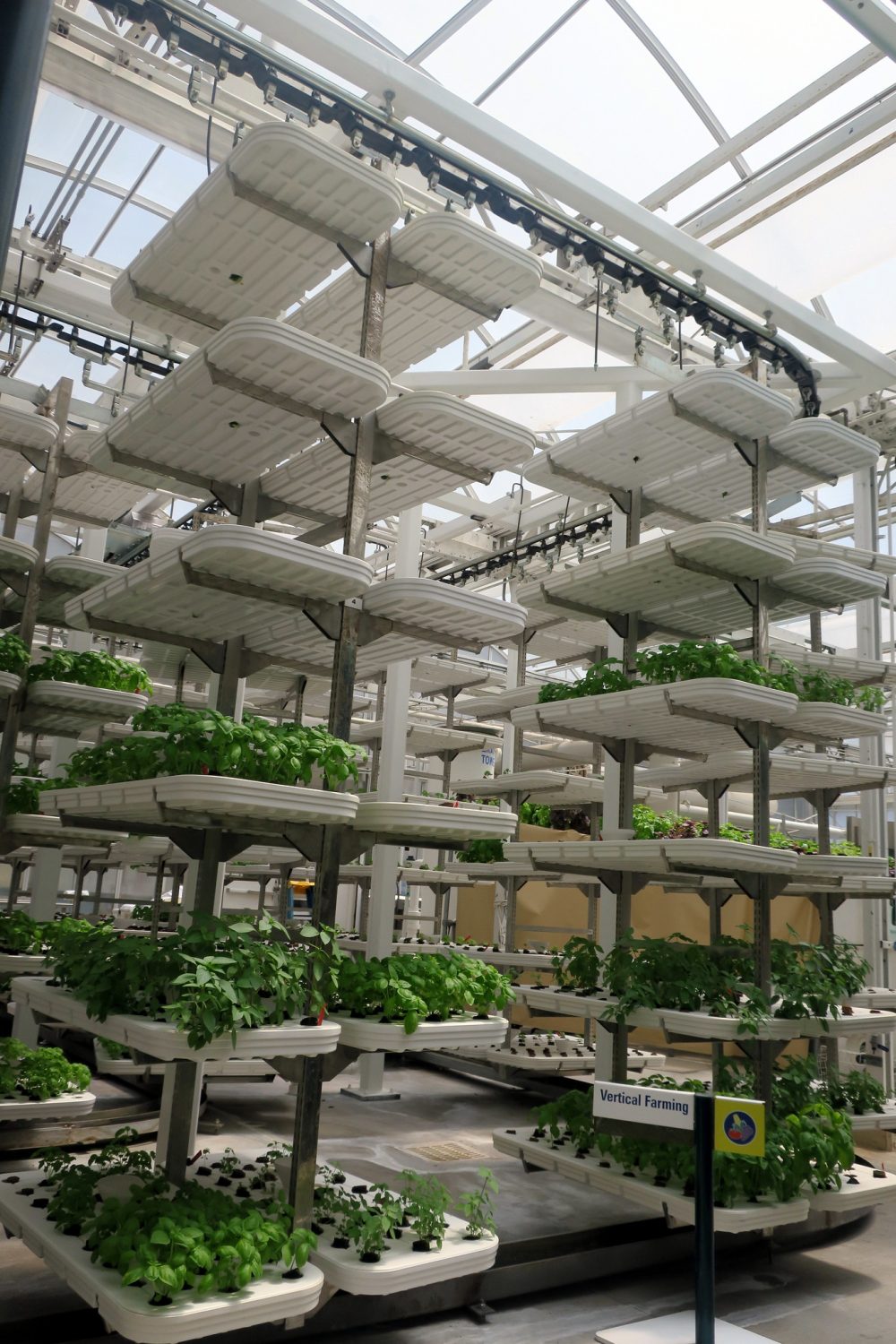Rolling green fields, cow bells, fresh-faced milk maids: many people still have a very romanticised vision of farming. But the romanticised image of farmers and farming will have to give way to something far more technological. To successfully feed a growing global population and to protect the environment, we need to come up with new ways of thinking about food production. Whether it’s harvesting vehicles, peer-to-peer knowledge sharing platforms, robot bees or automated processes on the field, the keyword here is digital farming. Farms are increasingly becoming factories in the countryside.
But it’s not just a question of how the agriculture of the future will be done, but also where. For, despite nature’s beauty, its potential for violent storms and poor weather can lead to damaged crops and failed harvests. There are more and more scientists and companies looking into new production locations and techniques to ensure future food security – whether it’s farms under the ground, under the sea or even in igloo greenhouses in the Arctic. The US-based company AeroFarms has also shifted the production of leafy greens into a completely controlled environment. The company opened its first indoor farm ten years ago in the Finger Lakes area of New York State – and since then has become the worldwide market leader.
Successful Farming Without Sun or Soil
At their 70,000 square foot main base in Newark, New York, AeroFarms currently produces more than 900,000 kilograms of leafy greens each year. The technology behind their generous harvests is aeroponics, a process which grows plants with no soil and using only minimal amounts of water. Instead, the plants’ roots are exposed to air that is enriched with water vapour and nutrients, while the entire area is lit with LEDs. It’s a technology with a long history having been founded back in 1982 and further in the 1990s by NASA scientists for experiments into growing food in space.
AeroFarms has fine-tuned the technology and developed a controlled and completely closed agricultural system that in some respects is far gentler to the natural environment than traditional agriculture. According to the company, their system uses a huge 95 per cent less water than traditional methods, while aeroponic systems also require no pesticides and much fewer fertilisers. Another advantage of an entirely-controlled system is that every aspect of the environment can be perfectly tailored to suit the plants. Crops receive exactly the right nutrients that they require, in the right dose and at the right time, making the plants grow twice as fast as normal.
Bringing agriculture indoors like this also means that crops can be planted and harvested all year round – even close to big city centres. That brings food producers closer to food consumers, shortens transportation distances and times and – thanks to the multi-layered, vertical planters – makes much more efficient use of space.
Is the Aeroponic Method the Future of Farming?
Well… the jury is still out. While high-tech agricultural methods such as AeroFarms could contribute to achieving future food security, the system still isn’t all that sustainable in the long term, still requiring a huge amount of energy to light, heat and repair the infrastructure. For multi-level aeroponic farming to be truly sustainable, we must develop more energy-efficient solutions for heating and lighting, as well as ensuring that the electricity used comes from renewable sources.
To find out more about how technology could help reduce hunger and improve food security, check out our archive of articles on the topic.
This article is a translation by Marisa Pettit of a post by Sarah Kricke which first appeared on RESET’s German-language site.






